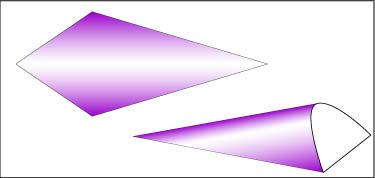What is Concave Faceting?
Faceting is the cutting and polishing of flat planar surfaces in a geometric pattern on a transparent gem material. The facets are cut utilizing diamond-charged, flat disks that rotate horizontally on a platter much like a record on a turntable.
Flat facets are shaped by their neighboring facets and the angles at which they intersect one another. Flat facets are two dimensional - they have only length and width.
Concave facets are uniquely three-dimensional. They possess length and width defined in the same way as flat facets, but they also have depth to their shape because the cutting and polishing is performed on diamond-charged round cylindersmounted horizontally on the cutting machine. Faceting in this manner creates concave 'conical' facets that are truly three-dimensional in shape.
The gem cutter controls the depth and sharpness of the curved, three dimensional facets through the diameter of the cylinder being used. Indeed, many of the best concave gem designs employ a number of different radii of curvature. Knowing when, how, and what size radius to employ are only a portion of the real artistry, skill and technique involved in concave gem cutting! Coupled with the far greater demand for hand-to-eye coordination and sensitivity - not to mention the depth of understanding of optics - these are just a few of the reasons that concave gem cutting is an art all to itself.
Why is the appearance of concave faceted gems superior? In a nutshell, it is because three dimensional facets have a mathematically greater opportunity to reflect and return more of the ambient light to the observer in the form of brilliance.
Of course, it is not all that simple, but it is interesting to note that an improperly cut, flat-faceted gemstone may only look good at one observation point under very good light. Even a properly cut flat-faceted gem tends to look its best either from a few vantage points in really good light or from a single vantage point in subdued light.
But the strength, beauty, and value of a well cut concave faceted gem is such that it looks great from many angles both in good lighting and in subdued lighting!
The beauty and brilliance of a ConcaveGems faceted gem in candle-light, at dusk, or in any lighting condition makes it a treasure to enjoy. Indeed, observation in less than optimum light is the test of any gem. ConcaveGems faceted gems continue to captivate and attract because they possess the greatest appeal and beauty at all times, everywhere, in all kinds of light!
Synopsis of Concave Faceting Optics
I. General Optical Effects
1. Diffusing aspects of pavilion facets
- promotes evenness of brilliance
- minimizes or eliminates hot spots or dead spots in fancy shapes
- diminishes color zoning
- softens the brilliance. . .no harsh planar reflections which could overpower the sublety of light body colors in gem materials such as Aquamarine.
2. Dramatic increase in brilliance
- appearance of having many more facets than are actually there
- makes the gem seem to have a higher R.I. (refractive index) than it really does, resulting in Quartz looking like Beryl, Beryl like Topaz, Topaz like Corundum, and even Corundum looking as brilliant as Diamond!
3. Darkens tone of gem material by 1/4 tonal grade
4. Conical crown facets focus and magnify light into pavilion
II. Other Advantages of Conical Facets
Concave Faceted Aquamarine brilliantly designed and created by award winning jeweler, Dana Richardson
- Best cutting technique for light to medium dark toned gem material
- Can use shallower pavilion angles and still produce a very brilliant gem
- Can create aesthetic, new gem shapes with interior curved outlines..
- Improves brilliance in all but the darkest gem materials
- Dramatically reduces extinction (dark areas of little or no brilliance) which is so prominent in flat faceted fancy-shapes such as pear, marquise, oval, etc.
III. Other Considerations
- Cylinders of different diameters can be used to create different curvatures of facets within a single gem design.
- Multiple curvatures in combination with flat facets yields unparalleled designs and brilliance
- Potential for unique designs are virtually limitless considering the vast number of variables that can be employed on the pavilion, crown, and girdle outlines.





